Suhas Apte and Jagdish N. Sheth
Advance Praise for The Sustainability Edge
The Sustainability Edge is loaded with real-world examples of sustainability delivering competitive advantage. It examines the responsibilities of individual businesses, employees, suppliers, consumers, government, and NGOs in developing lasting environmental and business solutions. Unlike other sustainability books that are preachy and lack substance, The Sustainability Edge gives a roadmap for success.
Robert Abernathy, CEO, Halyard
If you are convinced that sustainability is a top issue for your organization, you will often be perplexed about what you can do about it. The Sustainability Edge synthesizes practical responses to the complex and nuanced challenges of sustainability, helping leaders to fundamentally transform their companies. Read the book even if you are not convinced about the critical importance of sustainability you will be convinced.
Anurag Behar, Chief Sustainability Officer, Wipro Limited, and CEO, Azim Premji Foundation
The new frontier in marketing is certainly sustainability. Sheth and Apte have constructed a roadmap to help business leaders gain a competitive edge based on creating sustainable value for all of the firms stakeholders not just its shareholders. The Sustainability Edge encourages business leaders to integrate business and sustainability strategies, creating value and a better world.
Ralph de la Vega, Vice Chairman, AT&T Inc., and CEO, AT&T Business Solutions and AT&T International
The Sustainability Edge is a must-read for todays business leaders. It shares best practices and practical examples of how leaders can embrace sustainability by working with key stakeholders to grow their business.
Mindy Lubber, President and CEO, CERES
Businesses have to be financially viable and technologically competitive. That they have to be ecologically sustainable as well is an idea whose time has come. Jagdish Sheth and Suhas Apte have written a seminal book that makes a persuasive case for viewing ecological sustainability as an integral part of corporate strategy and demonstrates vividly that it makes eminent business sense to do so. They discuss numerous examples of companies that have embraced this new thinking to their advantage and to that of their stakeholders. This is a book that CEOs all over the world will find very useful as they reorient their businesses to be anchored in ecological sustainability.
Jairam Ramesh, Member of Parliament and former Cabinet Minister, India
Apte and Sheth have produced a compelling framework combining big-picture insights with practical how to guidance. A valuable, inspiring read for business students and seasoned executives alike.
P.J. Simmons, author, and Chair, Corporate Eco Forum
The expectations of business from consumers, employees, communities, and other key groups are growing daily. The Sustainability Edge provides business leaders with a roadmap through this complicated world of stakeholder expectations. The guides on this journey, Apte and Sheth, know what theyre talking about theyve worked within, and outside, companies for decades, proving that sustainability is the next frontier of competitive business advantage.
Andrew Winston, co-author of Green to Gold and author of The Big Pivot
We dedicate this work to our grandchildren Ryan, Mira, Rehna, Maya, Anaya, and Arya as ensuring a more sustainable world will be critical for their future and the future of their generation.
Foreword
PHILIP KOTLER
Sustainability is a word that came into our consciousness over 30 years ago. Many people do not know what it means and as such give it a variety of different meanings. I think of it as covering the practices of individuals, groups, and organizations that are conscious of the impact of their activities on the health of our planet. If timber companies cut down too many trees, it will lead to more greenhouse gases and warm up our planet. If fishing boats overfish, an important food source will grow scarcer. If chemical companies drop toxic chemicals in our rivers, it will hurt the water quality for future generations of citizens.
In the past, business firms mainly focused on making profits. The world seemed rich in resources and consumers appeared to have infinite needs. Managements job was to use up as many natural resources as needed to create a steady stream of products and services to satisfy an ever-growing consumer appetite.
Some people started to voice alarm about our unbridled level of resource use and consumption. Rachel Carson, in her 1962 book Silent Spring, documented the harm being done to our rivers and streams. In 1972, the book Limits to Growth was published suggesting that unlimited consumption could damage the health of our planet. Increasingly, people began to talk about conservation of our resources and sane consumption.
This new perspective greatly troubled the business community. All companies thrive on More! More! More! How could companies maintain their profitability if more consumers began to think that less is more?
One company, Unilever, thought hard about this problem. Paul Polman, CEO of Unilever, made the following statement: Our ambitions are to double our business, but to do that while reducing our environmental impact and footprint It has to be done via more responsible consumption. Polman was saying in effect that his company could attain good business growth and profitability and yet adhere to sustainability standards. Since then, Unilever has become a leader and an icon in the practice of sustainability.
It took more than Unilever doing creative marketing and brand building to earn high profits. What Unilever and other sustainability practitioners did was to get all of their stakeholders committed and motivated to practice sustainability. And this is why I am so impressed with this new book, The Sustainability Edge. It is written precisely to help businesses know what they can do with their stakeholders (consumers, customers, employees, suppliers, and the other five stakeholder groups) to contribute to a healthy planet. Each stakeholder chapter presents excellent material on sustainability and many compelling examples of what that stakeholder group can do.

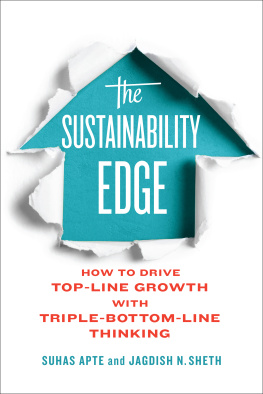
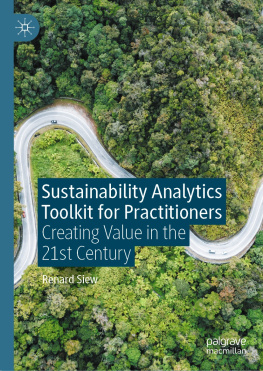
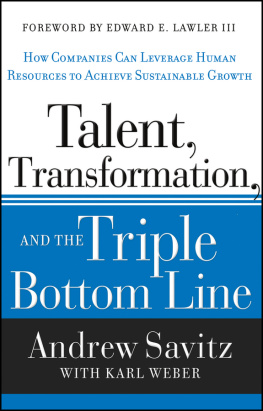


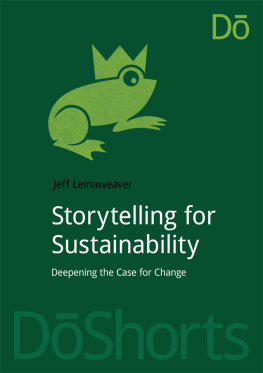
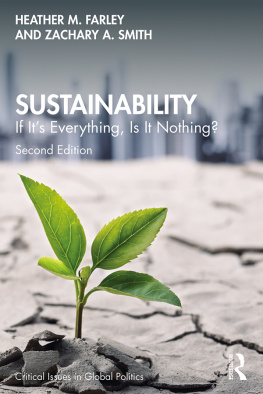
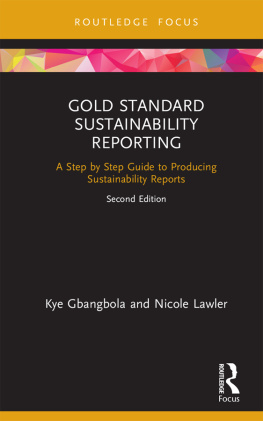
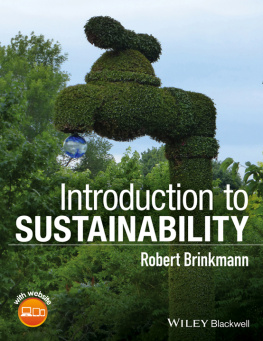

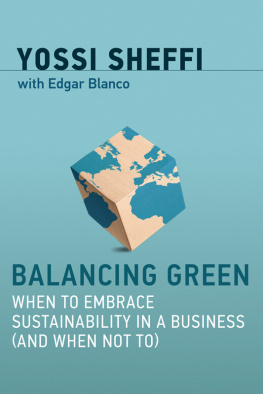
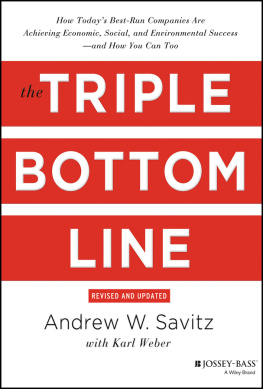
 Printed on acid-free, 100% post-consumer recycled paper with vegetable-based inks.
Printed on acid-free, 100% post-consumer recycled paper with vegetable-based inks.
